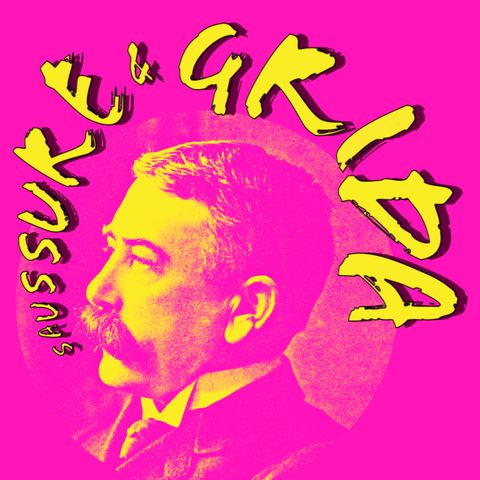3. Come parliamo ai neonati, ovvero il "baby talk"

Descarga y escucha en cualquier lugar
Descarga tus episodios favoritos y disfrútalos, ¡dondequiera que estés! Regístrate o inicia sesión ahora para acceder a la escucha sin conexión.
Descripción
Come parlate quando avete un neonato o una neonata in braccio? Se fate delle vocette acute e imbarazzanti siete in buona compagnia con la quasi totalità degli esseri umani. In...
mostra másL'audio del baby talk preso dal canale Youtube di https://reachoutandread.org/
La sigla è stata prodotta da White Hot e fornita da https://freebeats.io
Grafiche: Gianluca La Bruna
FONTI:
- Albin, D.D., & Echols, C.H. (1996). Stressed and word-final syllables in infant-directed speech. Infant Behavior & Development, 19(4):401–418.
- Ben-Aderet T., Gallego-Abenza M., Reby D., & Mathevon N. (2017). Dog-directed speech: why do we use it and do dogs pay attention to it? Proceedings of the Royal Society B284(1846)
- DeCasper A.J., Lecanuet J.P., Busnel M.C., Granier-Deferre C., & Maugeais R. (1994). Fetal reactions to recurrent maternal speech. Infant Behaviour and Development, 17(2):159-164.
- Dissanayake, E. (2000). Antecedents of the Temporal Arts in Early Mother-Infant Interaction. In N. Wallin, B. Merker, and S. Brown (Eds.) The Origins of Music:389-410. Cambridge: MIT Press.
- Eimas P.D., Siqueland E.R., Jusczyk P., & Vigorito J. (1971). Speech perception in infants. Science 171:303-306.
- Eimas, P.D., & Quinn, P.C. (1994). Studies on the formation of perceptually based basic-level categories in young infants. Child Development, 65:903–917.
- Fernald, A. (1985). Four-month-old infants prefer to listen to motherese. Infant Behaviour and Development, 8:181-195.
- Fernald, A., & Mazzie, C. (1991). Prosody and focus in speech to infants and adults. Developmental Psychology, 27:209–221.
- Fernald, A., & Simon, T. (1984). Expanded intonation contours in mothers’ speech to newborns. Developmental Psychology, 20:104–113.
- Green, J.R., Nip, I.S.B.; Wilson, E.M.; Mefferd, A.S.; Yunusova, Y.(2010). Lip Movement Exaggerations During Infant-Directed Speech. Journal of Speech, Language, and Hearing Research. 53(6):1529–1542.
- Jusczyk P.W., Cutler A., & Redanz N. (1993). Preference for the predominant stress patterns of English words. Child Development, 64:675-687.
- Kuhl P.K. (1991). Human adults and human infants show a "perceptual magnet effect" for the prototypes of speech categories, monkeys do not. Perception & Psychophysics, 50(2):93-107.
- Lacerda, F., Klintfors, E., Gustavsson, L., Lagerkvist, L. Marklund, E. & Sundberg, U. (2004) “Ecological Theory of Language Acquisition.” In. Berthouse, L., Kozima, H., Prince, C., Sandini, G., Stojanov, G., Metta G & Balkenius, C. (Eds.) Proceedings of the Fourth International Workshop on Epigenetic Robotics (EPIROB 2004) Lund University Cognitive Studies, 117:147-148.
- Mithen, S. (2006) The Singing Neanderthals: The Origins of Music, Language, Mind and Body. London: Weidenfeld and Nicolson.
- Patel, A. (2008). Music, Language, and the Brain. Oxford: Oxford University Press.
- Trainor, L.J., Tsang, C.D., & Cheung, V.H.W. (2002). Preference for Sensory Consonance in 2- and 4-Month-Old Infants. Music Perception: An Interdisciplinary Journal, 20(2):187-194.
- Vosoughi, S., & Roy, D. (2012) A longitudinal study of prosodic exaggeration in child-directed speech. Proceedings in Speech Prosody:194-197
Información
| Autor | Irene |
| Organización | Irene Lami |
| Página web | - |
| Etiquetas |
Copyright 2024 - Spreaker Inc. an iHeartMedia Company

Comentarios